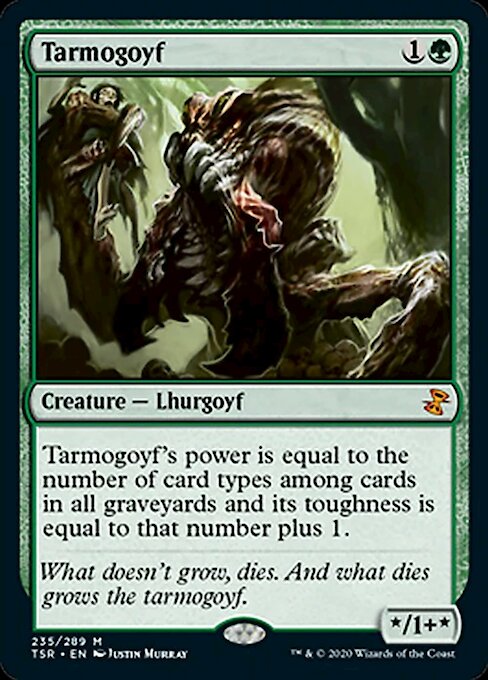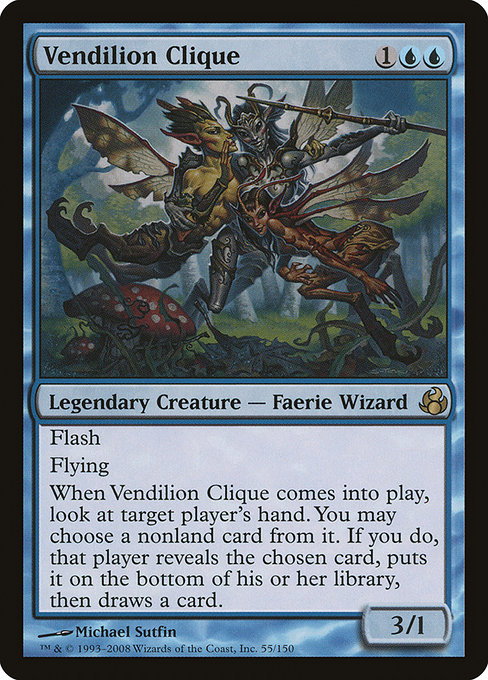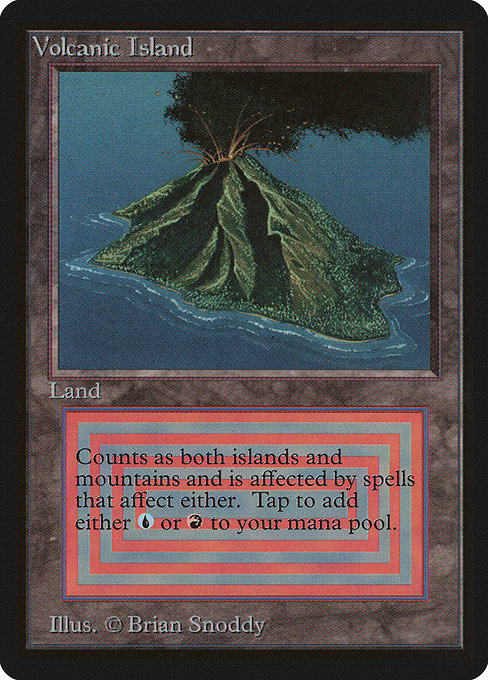Are you a Quiet Speculation member?
If not, now is a perfect time to join up! Our powerful tools, breaking-news analysis, and exclusive Discord channel will make sure you stay up to date and ahead of the curve.
Last week I wrote about Burn as a budget option to get into Legacy. And it's a fine choice if you're into that sort of thing. After playing the deck for a few days, I did encounter a number of problems though.
Miracles is popular (have you read Counterbalance?!), Elves is popular (you're on the losing side of this race), and Goblin Charbelcher is nigh unbeatable (and popular!). One thing about the Legacy two-mans is that you'll often enough find yourself playing against the same person over and over again depending on the time of day that you play them. After taking a few thrashings from Belcher one evening, I thought I'd be much happier playing literally any Force of Will deck.
My go-to Force of Will deck typically includes Delver of Secrets // Delver of Secrets. Every good Delver of Secrets // Delver of Secrets deck includes Daze and Wasteland. My MTGO budget currently makes Wasteland a limiting factor for my deck-building. Daze sucks without Wasteland, and Delver of Secrets // Delver of Secrets really sucks without either. Not only does it make sense theoretically, as the only reason a 3/2 flier is allowed to dominate an otherwise degenerate format is very efficient interaction, but I also tried to make things work way longer than I should have. No Wastelands, no Delvers.
If you can't Wasteland but want to Force of Will, then I firmly of the belief you should be playing Counterbalance. There are definitely other options, but I'm all about not letting my opponent play Magic. Fun in games of Magic is zero-sum, and I want all of it.
Hundreds of years ago, when Legacy was about as competitively explored as the ocean's depths, there were some pretty serious considerations to be made about how to build a Counterbalance deck. In 2014, almost every Counterbalance represented in a tournament is coupled with a Terminus, although there are exceptions. For example, take the Grixis deck that Jared Boettcher smashed the Columbus Invitational with:
Grixis Painter
This deck is... really awesome.
But man, does it look busy. Considering the lack of fast mana, this deck is rarely going to be comboing quickly, which means that it's probably going to be setting up Counter-Top or generally screwin' around with Goblin Welder. Welder is sweet, but he may lead the deck to just screw around too much. Between this and Miracles, you're really choosing between a control deck with a backdoor combo win and more controlling deck that wins slower.
Boettcher's deck looked like it would be weaker in the mirror, so I started looking at Azorius cards.
A little piece of trivia about me is that I despise playing Swords to Plowshares in Legacy. It's an MVP in some matchups and a stone cold blank in others. It reeks of sideboard stardom, but you really can't justify not maindecking any, for when you're white, Swords to Plowshares is... Well, just what you do, you know?
So anyway, Miracles plays Swords AND Terminus, which is redundancy on our all-star to dud slots, and that's just nauseating. This led me to trying to juxtapose Stoneforge Mystic with Counterbalance.
This is hardly a novel idea, and you'll see a few people playing SFM in the sideboard of their Miracles deck. The list that I tried looked like this with a few slots fluctuating between matches:
Counter Blade
I liked the fact that I was a Counter-Top deck but often begrudged the fact that I was playing a Swords to Plowshares deck.
After some trial and error, I found a home for Counter-Top that I can really get behind:
Fair and Balanced
Why Should I Play This Trash?
The primary motivation for playing this deck is that most of the control package doubles as win conditions. Lightning Bolt and True-Name Nemesis can tango with opposing creatures or opponents. They are more versatile than Swords to Plowshares, which is exceptional, but only at doing exactly one thing.
Notably, this build is a bit weaker to Tarmogoyf, which is the primary reason I've included two Spell Snare and a miser's Dismember. I'm not the biggest fan of the Dismember though, and it's the slot that is most likely to change in the near future.
The other advantage over Miracles at that this deck relies less heavily on Sensei's Divining Top. A Spell Pierce on a Miracle player's Top can lead to Terminus sitting in all the wrong places, while Top in my list is solely present for card selection and locking opponents out of the game with Counterbalance.
Minimally, cutting the white cards makes this deck much better in Counterbalance mirrors. I have Spell Snares for Counterbalance and Lightning Bolt tends to matter more against Jace than Swords does. Every True-Name Nemesis demands a Terminus, whereas my answers to opposing Vendilion Cliques are much more available.
Admittedly, the Nemeses are just holdovers from when I was Stoneforging. I've generally liked them, though that's not to say they're not replaceable. There are definitely times when I'd rather be Trinket Mage-ing. Just playing more Vendilion Clique is also a definite option.
Thus far in my testing, the deck's weaknesses have been to resolved Tarmogoyfs and the Cloudpost deck. The matchups are actually all very similar to UWr Miracles, with the following:
- You're better in the mirror.
- You're worse against BUG.
- You're better against Combo.
- You're worse against fair decks that "go big" (I'd rather have Terminus against Nic Fit and decks with Primeval Titan).
With the mirror being a significantly popular deck on MTGO and BUG being too expensive for most people to touch, I believe this deck is well positioned on MTGO.
Unlike Burn, this isn't exactly a budget deck, although all of the expensive cards are played in multiple decks, which is a quality that I really value when investing in Legacy.
If you want to play a more budget deck like Elves then you'll unload a lot of tickets on Gaea's Cradle, which really can't be played in any other deck, whereas investing in Force of Will, Counterbalance and True-Name Nemesis allows you to work towards having access to multiple decks based on metagame shifts. Blue fetches, while expensive, are played in a ton of good decks, and in many of them, any blue fetch is almost completely interchangeable.
Dual lands are especially great pickups in the near future. Blue duals were 20+ when Legacy events weren't even firing. There are obviously a ton more available at this point in time, but if the format continues to see a comparable amount of play as it does now, then I would find it very hard to believe that dropping 12 tix on a Volcanic Island would lose you money.
If nothing else, refer to the spike that happened when everybody thought VMA queues were disappearing. A similar spike will almost assuredly occur when Khans of Tarkir launches and VMA events actually do stop firing.
As for live/paper play, I can't say that I recommend this list just yet. It is good, but still a little rough around the edges. I will be playing it online, but there's a reason I've stuck with Wasteland decks for live events. This deck does have potential though, and I could see a polished version fairing extremely well in the proper metagame.
If you have any thoughts on improving the list I'm all ears. Hit me up in the comments!
Thanks for reading.
-Ryan Overturf
@RyanOverdrive on twitter










“Fun in games of Magic is zero-sum, and I want all of it.” It was fun reading this.
Heh. That one is from the Glenn Jones school of thought.